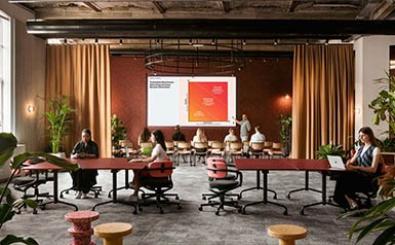Last year, we joined an industry panel discussion on the topic of creativity in health that looked at answering the question: “Is it needed now more than ever?” As you can imagine, with speakers representing ad agency and PR life as well the Cannes Lions team, the consensus on the day was a unanimous yes. But, everyone also agreed that within the healthcare sector, uptake of creativity-led communications campaigns was still slow. The Cannes Pharma Lions in 2020, for example, received only a fraction (mid-hundreds) of the entries of the traditional awards programme, with the majority seeming to come from advertising agencies, and a Grand Prix had only been awarded by the jury intermittently.
Fast-forward to the summer of 2021 where, a year later, we found ourselves thinking back on just what has changed since then. Much of the past two weeks has been spent marvelling at the creativity showcased at the virtual Cannes events – and being thrilled to see the myriad health campaigns that swept the Healthcare and Pharma shortlists and winners tables.
The campaign that took home the Pharma Grand Prix, SICK BEATS, reimagined the experience of a traditional oscillation vest for children with cystic fibrosis, turning it into an enjoyable, musical experience. What we loved about this campaign is that it wasn’t just a cool idea, but one that, when executed, actually made a difference for the lives of patients. In the same vein, our creative team in Germany made the shortlist for their campaign with AstraZeneca: CVRM, Patient Pathways, which took inspiration from the original tube map to help visualise the ways diseases can intersect and produced a shareable, translatable resource for healthcare professionals which is actually improving patient outcomes around the globe. Teva’s Hairspray campaign helped drive awareness of the role of carers, while The Melanoma Typeface was designed to accurately represent the visual symptoms of melanoma using a single character – a full stop, reminding people not to let a spot become a full stop. And the list goes on.
So it seems, encouragingly, that health and pharma brands – from Pfizer to Teva and Roche Genentech to Janssen – seem to finally be recognising the power of an earned creative campaign and mindset. Not to earn a spot at Cannes, but to actually deliver on their purpose and create a solution for a key healthcare and business challenge.
But like anything worth doing, integrating a creative approach into your daily ways of working doesn’t happen overnight or by accident. And the time really is now to double-down on this emerging appetite from our clients to embrace more creative-led campaigns.
Account, planning, strategy and creative teams all need to work closely together to ‘get under the skin’ of a client challenge – and that means sharing and expanding traditional client relationships and really integrating the entire process. Creatives can’t and shouldn’t be brought in ad hoc to sprinkle ‘big ideas’ like fairy dust. We truly believe the best ideas come from co-creation across teams and shouldn’t solely be the responsibility of a ‘creative’ team to unearth.
Our team was discussing the significance of this integration recently and kept coming back to this stunningly simple insight: healthcare revolves around life-changing innovations – but when it comes to how we communicate about them, we – both clients and agency teams – can be very cautious, worried about compliance, whether the idea is too ‘bold’ or if it might create a negative backlash in a tightly regulated environment, etc. We need to find the right balance between all of those things and not lose a good idea. Because healthcare innovation deserves a communications approach that is just as radical.
Given healthcare brands and businesses are innately purpose-led and patient-centric (with mountains of data to back it up), it’s even more important to reflect the innovation of our sector in the way we approach our communications and our storytelling. That requires communications teams working arm-in- arm with clients and internal stakeholders to be bold in our ambition and test and learn so that we can deliver real impact.
What we all have in common is our ultimate drive to do better for the people – patients, carers, healthcare professionals – that rely on us. In our mind, to do that, the critical success factor for the future is a creative mindset.
We need both creativity and craft – ensuring we pay equal attention to how we tell a story – to change the world.
Ishtar Schneider is Associate Director in the London Healthcare Team, and Esin Cittone is Creative Director in the Creative Team.
A version of this article first appeared in PMLive.




